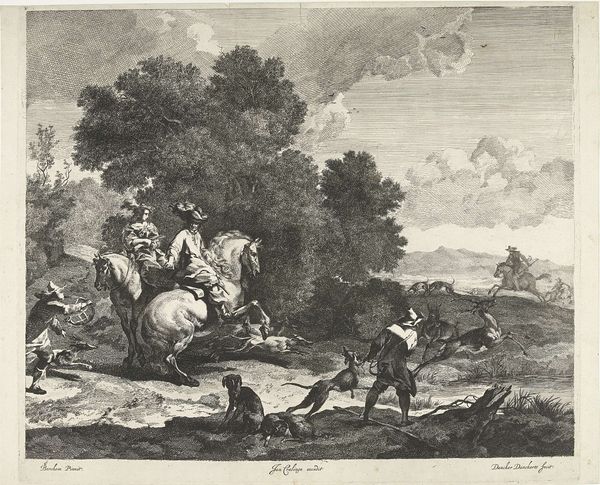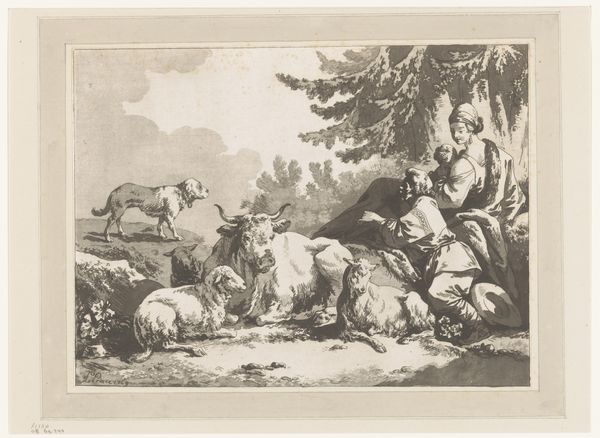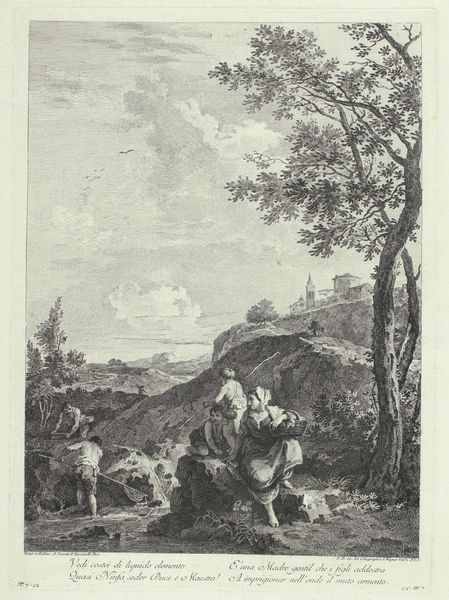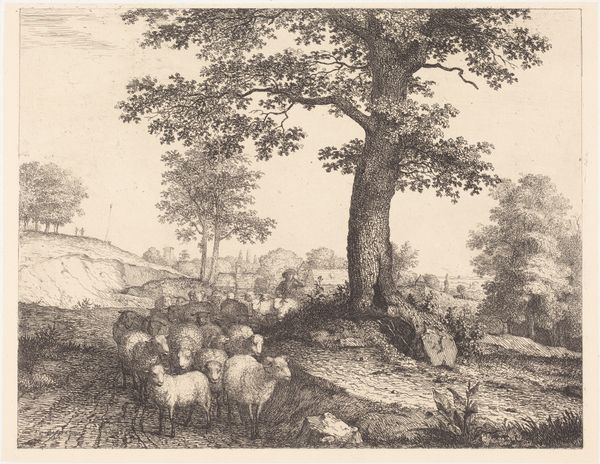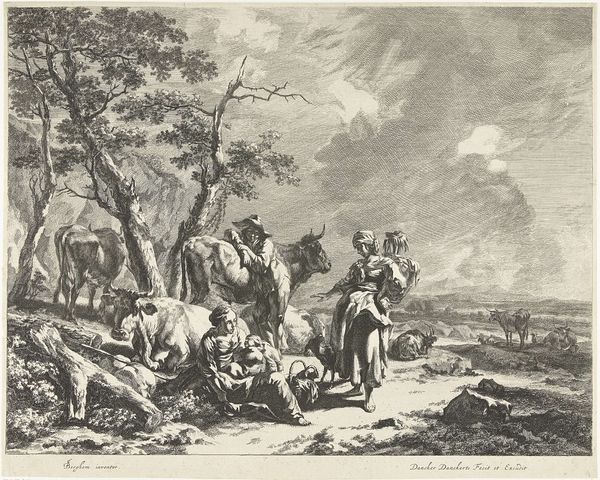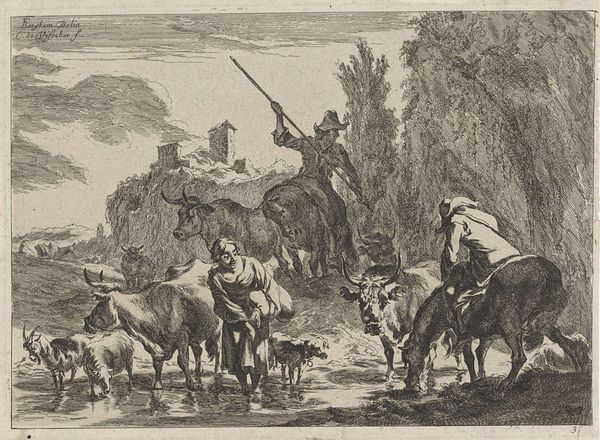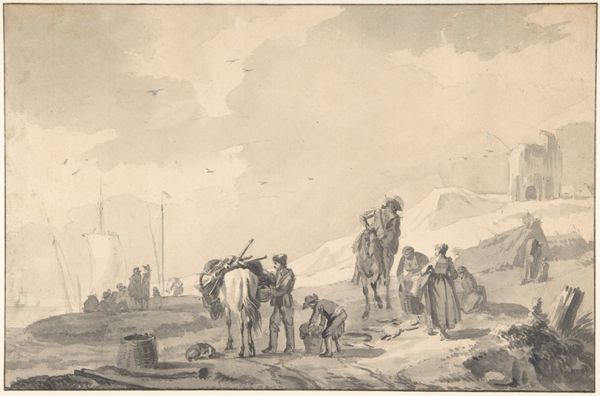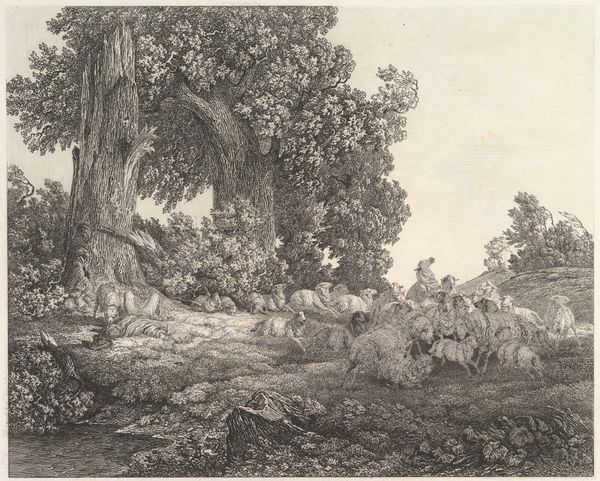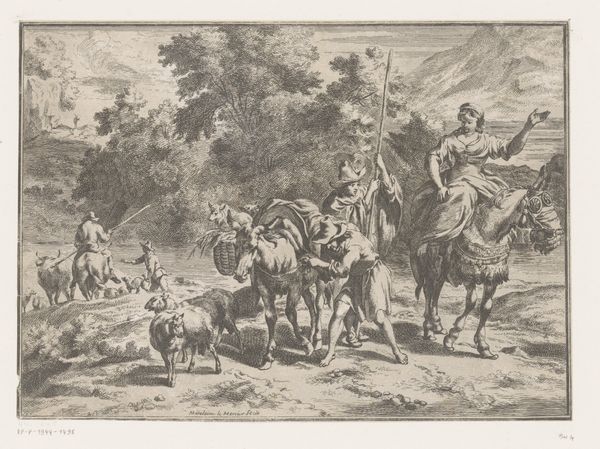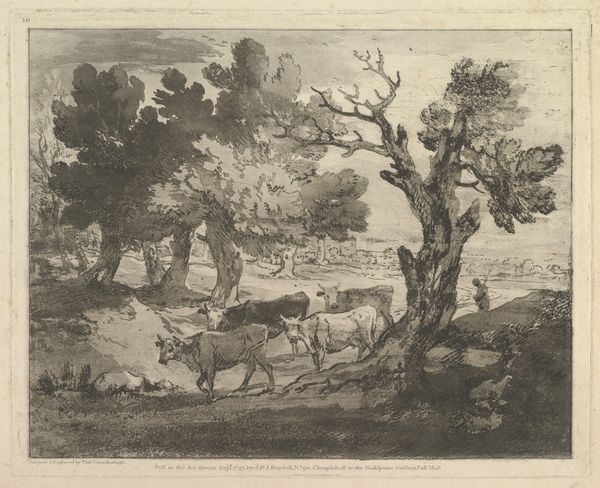
Berglandschap met herders bij hun kudde schapen en koeien 1632 - 1678
0:00
0:00
painting, watercolor
#
dutch-golden-age
#
painting
#
landscape
#
figuration
#
watercolor
#
watercolour illustration
#
genre-painting
#
watercolor
Dimensions: height 221 mm, width 292 mm
Copyright: Rijks Museum: Open Domain
Curator: "Berglandschap met herders bij hun kudde schapen en koeien," or "Mountainous Landscape with Herdsmen Tending their Flocks of Sheep and Cows," as it translates to English, painted by Karel du Jardin sometime between 1632 and 1678. Editor: It has this hazy, almost dreamlike quality to it, rendered entirely in earthy browns. There’s a stillness to the composition; it feels very serene. Curator: This genre scene emerges during the Dutch Golden Age when pastoral life gained significance not only as an economic activity but also as a symbol of national identity and simple living, an important visual narrative in a burgeoning Republic, which would have had a complicated and often contentious relationship with nature, gender, and colonialism. Editor: Look closely at the layering in the watercolour; it gives depth to the landscape but also speaks to the practical skills involved. The choice of such limited pigmentation itself invites questions about cost and accessibility, who could commission, own, and interact with similar works. Curator: Exactly. It speaks to a period of negotiation where labor relations become reframed in cultural production. While du Jardin romanticizes the pastoral scenes, scholars explore the intersection of labour conditions for workers with visual representations. How does he confront the changing societal dynamics? Editor: The subdued tones are almost subversive, avoiding any hint of ostentation common in other genres. I wonder about the labour practices of obtaining these brown pigments in this landscape, as their materiality offers a lens into art as a form of labour, engaging broader discussions surrounding natural resource usage during the period. Curator: Moreover, consider the gendered aspect of this. Who is the model posing with a very particular social idea in mind? Perhaps Karel wants to promote particular behaviours via an artistic construction, which would perpetuate a form of symbolic violence via this piece in some theoretical frameworks. Editor: Absolutely, and returning to those material choices...the simplicity itself could signal an alignment with emerging Calvinist values, critiquing excess but still providing aesthetic and tactile experiences for contemplation through material frugality. The materiality suggests the emergence of different classes of artworks consumed by specific members of society. Curator: So, both aesthetically peaceful yet socially imbued, and not just in its style but through material conditions embedded in its artistic processes and representations, reflecting labour practices that impact modern philosophical readings about Dutch nationhood in art history? Editor: Precisely, prompting a deeper look at both pastoral serenity and what materiality means through socioeconomic contexts for understanding Dutch society, questioning if what we're viewing might be constructed.
Comments
No comments
Be the first to comment and join the conversation on the ultimate creative platform.
